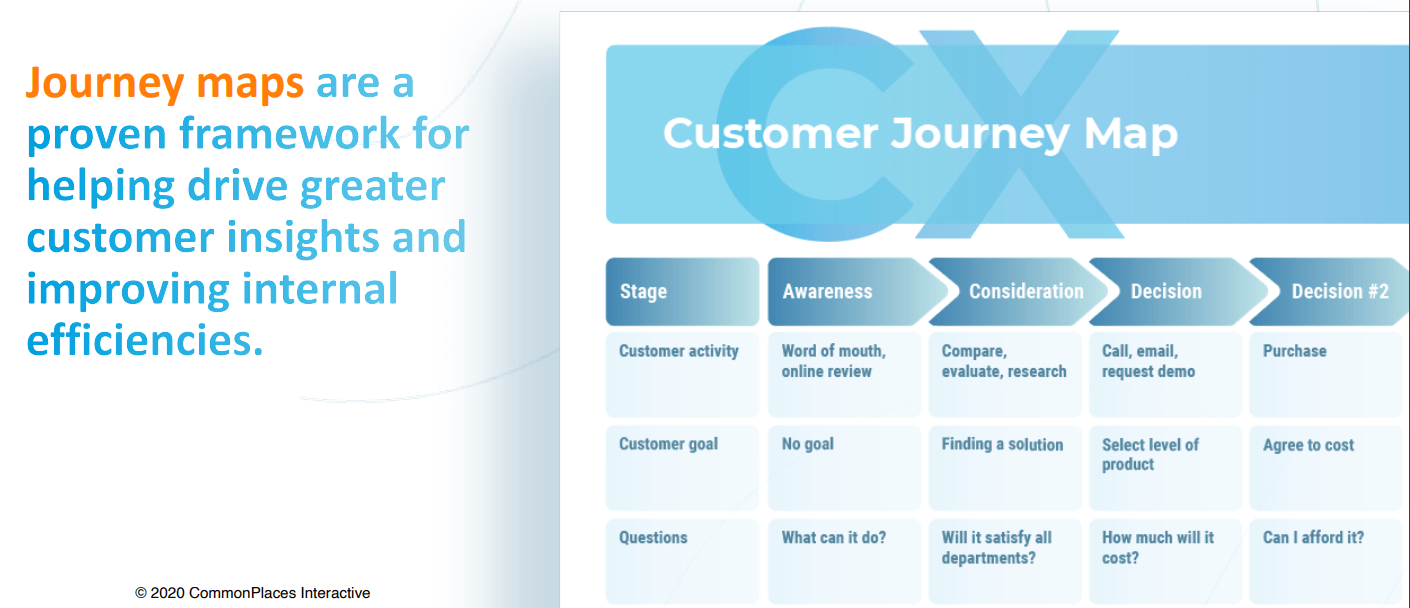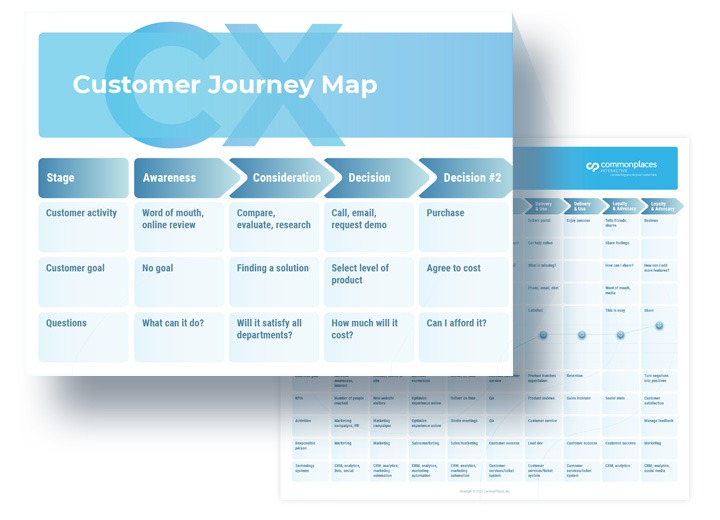Let’s talk about How to measure the Voice of the Customer to create WOW experiences on your web portal.
A strong understanding of who your customers are, what they enjoy, and what they struggle with will nearly ALWAYS give you an edge over competitors in your industry.
This is where Voice of the Customer research comes in.
What is the Voice of the Customer, and how does this help my website?
Remember the old saying, “the customer is always right?” When you hear the term, “Voice of the Customer,” it may bring images of old tv shows or movies where that saying echoes in your mind. It does for me, anyhow. Voice of the Customer, or VoC, is similar to that in a way – but on a modern day set of platforms. Actively measuring the Voice of the Customer helps you get to know your customers’ behavior, preferences, pain points, and needs on a more personal level, which then enables you to provide the best possible experience to them.
VoC data is gathered through several methods, and takes on a big role when creating customer journey maps. Voice of the Customer data serves to inform nearly every aspect of your modern business, including your website goals, which is what we will focus on today.

By gathering VoC data, you can focus your website or web portal on exactly what your customers want and expect.
There are many ways companies can approach Voice of the Customer research. You can choose from a variety of individual methods — which we’ll detail below — and you may often choose to draw on multiple research techniques to ensure a holistic picture of your customers.
Start with a Survey.
Customer surveys are excellent for gathering Voice of the Customer data. In fact, I’d go as far to say they are one of the best techniques for gathering both quantitative and qualitative feedback in that you can easily include quantitative ratings scales along with open-ended qualitative questions.
For example: When you ask your customers to measure their overall experience with your website, you can give them a scale of 1-10, and also ask for feedback on WHY they chose the number they did. This qualitative question goes the extra step in identifying trends on where your site needs to improve in the eyes of your customers.
There are many methods of delivering customer surveys, so you may have to experiment which survey delivery method works best for your specific business.
Identify trends in your contact form inquiries.
When you receive contact form inquiries, you’re usually going over very specific issues or feedback where you can identify trends across customer help requests, complaints, and compliments. By using data from these trends, you gain an understanding of the areas of your site which can present pain points to your customers, and by responding to these inquiries, you are able to ask for suggestions on what would make your customers’ experience more enjoyable. The Voice of The Customer gives you a point of view which you may not have otherwise realized.
Pay careful attention to social media, and not just your own.
Social media can prove enormous value in the VoC research process. For one, it can create a personal engagement between your brand and your followers, but more importantly, it allows for social listening. While people may regularly engage with your brand on social media, social listening creates the perfect fly-on-the-wall opportunity for you.
By monitoring how customers talk about your brand and your products, and how they engage in conversation about your industry or genre – even when they talk about your competition – you can get a true and honest view of what they really think. So go ahead and creep on your target audience! You will learn where you can make the improvements that your audience is truly looking for.
Always monitor your online reviews.
Akin to monitoring your socials, and those of your competition, keeping an eye on your brand’s online reputation is vital to winning NEW customers. Reviews are one of the most effective ways to tap into feedback on your services, your products, your website, and really any aspect of your business which your customers interact with.
Now, I’m not just talking about the glowing reviews that you put up on your own site, I’m talking about the playground known as the public internet: a.k.a. third-party review sites like Facebook, Yelp, Google My Business, TripAdvisor Consumer Reports, Angie’s List, G2, Capterra, and countless others. If you can build a picture of what is trending in your reviews, as well as those of your competition, you will have a crystal clear image of what is great, and what needs to change. But – “No one likes a negative Nancy” – Really, you can get some of the BEST advice from these particular Negative Nancies!
Ask for online user feedback right on your website.
Feedback forms can help you catch emerging trends on your Voice of the Customer data, even when you aren’t campaigning for them.
A feedback form link, placed unobtrusively, but easily visible on your site (for example, in your footer) allows customers to share their thoughts without having to search your site. This may link to your contact page or a survey, and is useful because it provides unsolicited feedback. Almost like ‘talking to the manager’ in a brick and mortar store.
Create a map of your customer behavior and UX data.
Actions can sometimes speak louder than words. By making use of behind the scenes analytics and UX Mapping tools like Google Analytics or CrazyEgg, you will be able to take a look at the customer experience from an analytical perspective. This will give you a chance to understand how customers behave on your site, in addition to what they are actually saying.
Pull it all together with a Customer Journey Map.
Customer journey mapping is the process of creating a visual story of customer interactions with a brand. This exercise provides insight to businesses by allowing them to see from the customer’s perspective, including common pain points and how to improve them. This is all tied together in a visually appealing presentation that can be shared across multiple departments and/or teams.

Customer Journey Mapping is used as an effective Marketing and Customer Process Improvement tool.
The Takeaway:
You can (and should) use every opportunity to listen to your customers in as many ways as possible. Use the information you gather from your Voice of the Customer research to create online (and in-person) experiences that follow what your customers want, resolve any issues, and create an exceptional customer experience journey.
Still aren’t sure where to start? We are here to help!
Related Article: How to Stand Out with Customer Experiences that Shine



